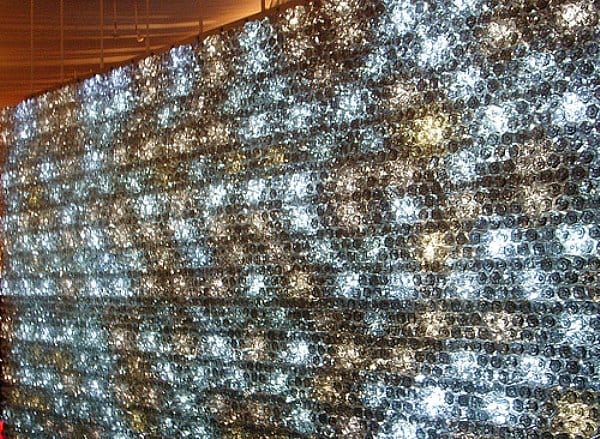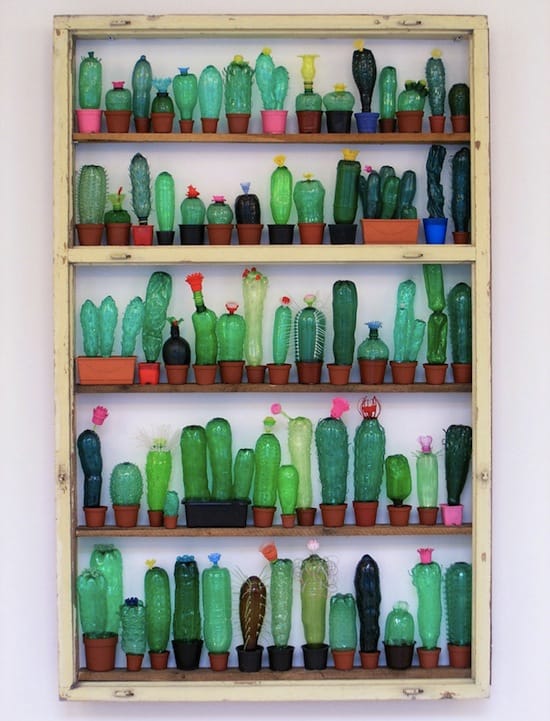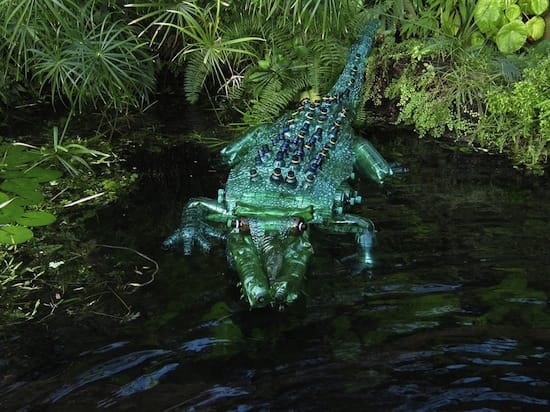Plastic waste. It is everywhere. Every year, about eight million tons of plastic get into the ocean, and scientists estimate that there may be as much as 110 million tons of plastic trash in the ocean.
A study published last Wednesday in Science Advances by researchers from the University of Cádiz in Spain and several other institutions show that a major ocean current is carrying bits of plastic, mainly from the North Atlantic, to the Greenland and Barents seas. The plastic waste stays there in the water, on the ocean floor, and even embeds in the surface ice.
The New York Times reports, “Andrés Cózar Cabañas, the study’s lead author and a professor of biology at the University of Cádiz, said he was surprised by the results, and worried about possible outcomes”.
Others—scientists, environmentalists, activists and artists—are concerned about the plastic waste in the ocean too. And a variety of people, organizations and companies around the world are trying to draw people’s awareness to the problem in unique ways.
Amsterdam-based NGO Plastic Whale fishes, “plastic bottles and other debris from the city's numerous canals. Second, when enough bottles are collected, the plastic is transformed into material to make a boat. Third, the new boat is used to fish for more plastic bottles—to make more boats,” according to EcoWatch.
Plastic Whale’s mission is to rid the world’s water of plastic and they called themselves a “plastic fishing company”. Since they were founded in 2010, they have retrieved more than 50,000 plastic bottles.
Plastic Waste as Clothing
Many companies produce clothing—or stuffing for clothing such as anoraks and parkas—from recycled plastic bottles. Patagonia was one of the first companies, in 1993, to use old bottles to create new fleece jackets. Their website explains, “Using recycled polyester lessens our dependence on petroleum as a source of raw materials. It curbs discards, thereby prolonging landfill life and reducing toxic emissions from incinerators. It helps to promote new recycling streams for polyester clothing that is no longer wearable. And it causes less air, water, and soil contamination compared to using non-recycled polyester.”
A newer clothing company, Girlfriend Collective, according to their website, has diverted more than six million post-consumer water bottles from landfills and waterways. Girlfriend Collective shreds the bottles and spins them into polyethylene terephthalate, or PET, the technical name for polyester yarn and fabrics, and then they use this to make their leggings. Each pair of leggings takes twenty-five bottles.
Plastic Waste in Architecture
Bocas de Toro Plastic Village, on the island of Bocas de Toro in Panama, is literally a village built one house at a time on eighty-three acres. Canadian expat, Robert Bezeau, and his team construct the wall panels of each home out of steel rebar that are welded together to create square mesh cages. Each cage is then tightly packed with plastic bottles and then covered with one inch of cement. The air in these plastic bottles acts as an insulator, making the interior temperature thirty-five degrees cooler than the outside wall.
Check out this YouTube video
The houses are affordable and designed to resist earthquakes. They are easy to assemble and each one uses thousands of water bottles; so much plastic waste that could otherwise end up in the ocean.
Water bottles were also part of the design when Architect Tadao Ando from Minato-ku, Osaka, used half-liter water recycled bottles, not for insulation, but for effect, when he designed New York City restaurant space Morimoto. Ando created an exquisite lounge area, with a sparkling sculptured wall of ECO Green recycled PET – more than 17,000 bottles. A two-story-high “water wall”, angled off of orthogonal lines, plunges down the center of the space alongside the stair. This freestanding bottle-wall contains mineral water and screwed into electric socket-type couplers. While vertical stainless-steel rods hold the couplers, horizontal bracing carries LED point lighting, producing a backlit waterfall effect.
Plastic Waste as Art
Since 2004, Czech artist, Veronika Richterová, has created incredible plastic bottle art. She heats, cuts, torches, and assembles PET plastic bottles to make awesome sculptures. Inspired by nature, her artwork includes sculptures of cacti, flowers, and animals. “I have used thousands of bottles and have created hundreds of objects, Richterová writes. “In doing this work, I have developed many specific methods of technological processing.”
Earlier this year, Richterová’s “Ocean Plastique” exhibited at Galerie de 3 lacs, and until last week, her exhibit “Tentacles” showed at the Czech Centre in Tokyo.
As we can see from these very diverse examples, creative solutions can help solve global environment problems in unique ways. How are you helping to keep plastic waste out of the earth's waterways?
Tags
#sustainable / Architecture / Art / clothing / Eco fashion / eco friendly / green building / PET / plastic bottles / Sustainability
#sustainable / Architecture / Art / clothing / Eco fashion / eco friendly / green building / PET / plastic bottles / Sustainability




